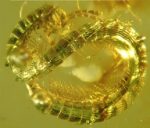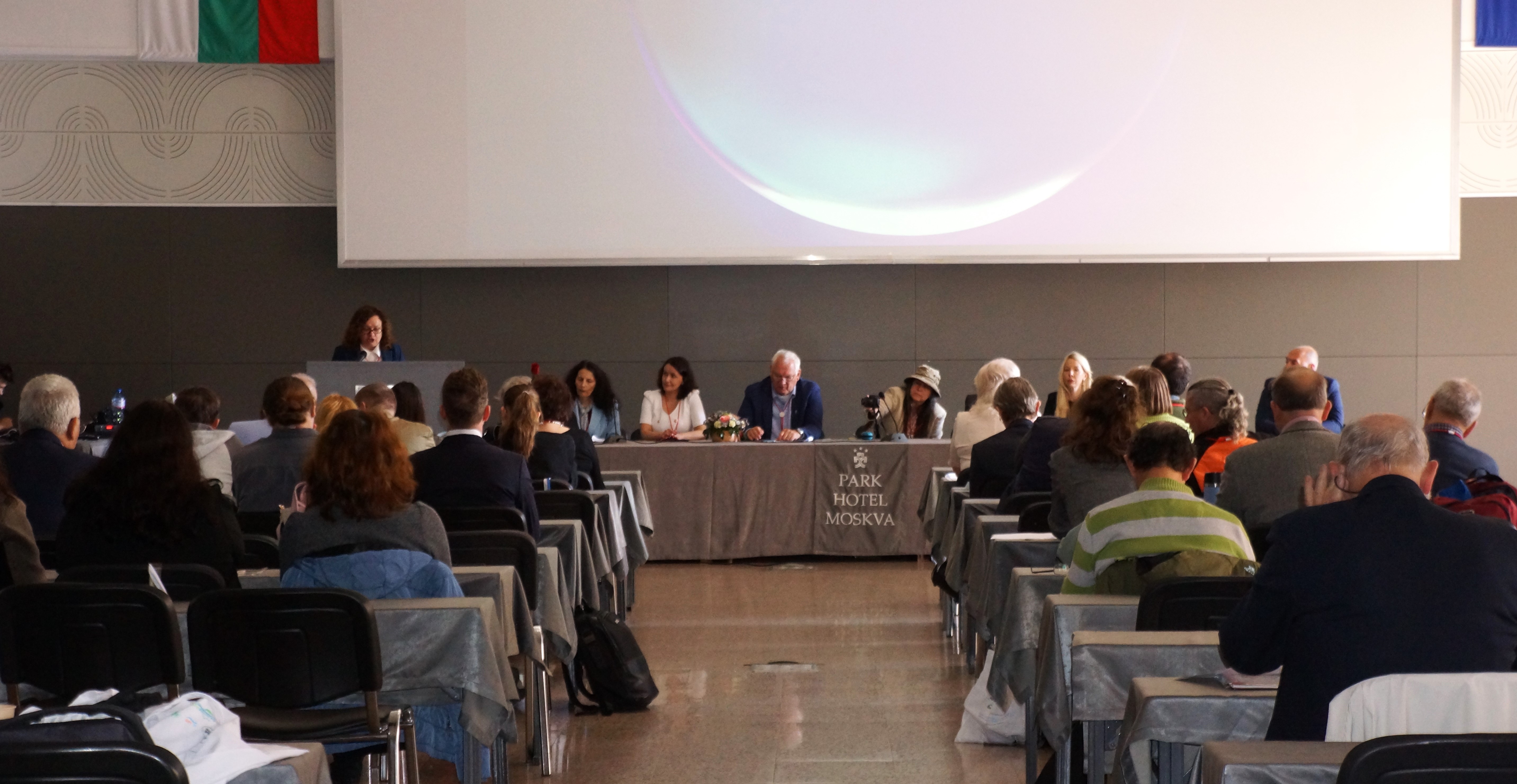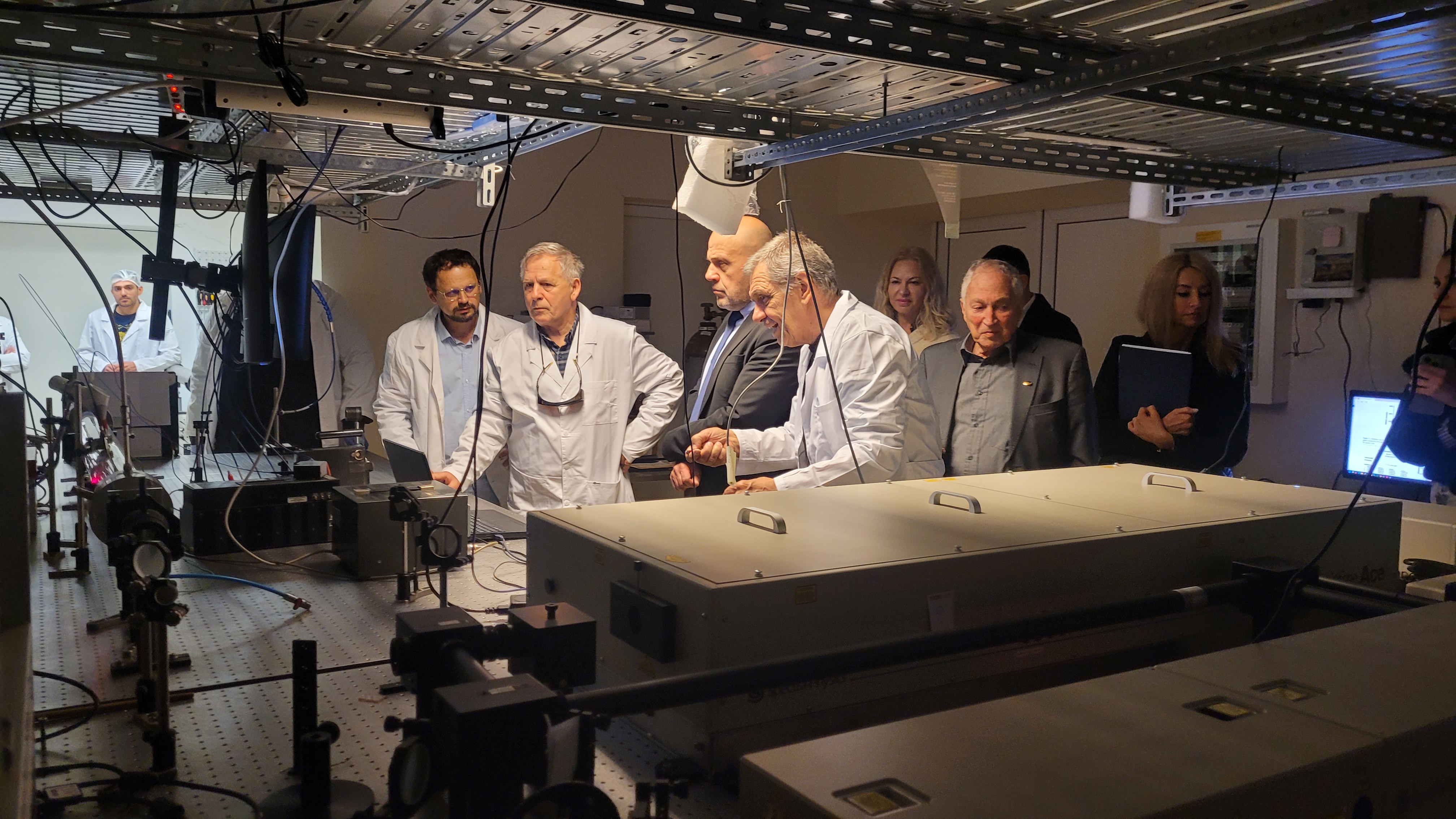 Using state-of-the-art technology, a Bulgarian-German research team established the first fossil representative of the Callipodida order. The new, unknown to science type of millipede with a size of only 8.2 millimeters is found in 99 million-year-old amber.
Using state-of-the-art technology, a Bulgarian-German research team established the first fossil representative of the Callipodida order. The new, unknown to science type of millipede with a size of only 8.2 millimeters is found in 99 million-year-old amber.
The new species of arthropod who lived in the Cretaceous period along with the dinosaurs is much smaller than all the known representatives of its group and differs significantly from all the species known so far which is why the scientists have separated it in a specially created new family and suborder.
During the Cretaceous period of the Mesozoic era, extending from 145 to 70 million years ago, the Earth was populated with various giants – from dinosaurs to centipedes with the size of a person. It turns out that even then there was room for miniature arthropods whose size was only a few millimeters. This is the newly-discovered millipede with a length of only 8.2 mm which the Bulgarian-German team of zoologists has found in amber (fossilized coniferous resin), extracted from a 99 million-year-old Myanmar (former Burma) site. Using next-generation technologies, scientists have found that this was the first fossil representative of the Callipodida order, which they called Burmanopetalum inexpectatum. The species was thus named because of the fact that only one specimen of this taxonomic group of animals had been found among over 520 individuals studied (“inexpectatum” translated from Latin means “unexpected”).
The morphology is markedly different from all the now living representatives of the order, as a result of which Prof. Pavel Stoev of the National Museum of Natural History at BAS and his German colleagues, Dr. Thomas Wesener and Leif Moritz from the “Alexander Koenig” Museum in Bonn, had to review the existing classification and describe a new suborder, something that happens rarely nowadays.
“We have been fortunate to find this interesting specimen which has been preserved in perfect condition for nearly 100 million years!” – explained Prof. Stoev.
In order to study the fossil, scientists have used the special computer micro-tomography technology, which shows in detail the anatomy of the animal. Using X-rays allows to explore the inside of the object at different depths and to create a digital 3D model that shows even the smallest animal’s anatomical features.
“The classification of modern arthropods is built to a large extent on the characteristics of soft tissues that do not leave a good footprint in the earth’s crust. This makes it extremely difficult to classify fossil species among modern animals. While the appearance of this order has remained unchanged over the last 99 million years, a period during which our planet underwent significant changes, the new finding shows that some morphological traits have evolved considerably,” Prof. Stoev added.
The team has expressed their special thanks to Patrick Müller who has allowed them to study his private collection of amber.
“His collection of animals in Burmese amber is the largest in Europe and the third largest in the world. We have had the opportunity to explore more than 400 stones that contained millipedes. Now they are deposited at the Alexander Koenig Museum, and scientists from all over the world can study them,” said Dr. Thomas Wesener.
On the occasion of the discovery and the publication, the world expert in fossil-arthropod research, Dr. Greg Edgecombe of the Natural History Museum in London, commented: “From the entire Mesozoic era – a period of 185 million years – until now only a dozen species of millipedes had been known. However, the new findings from Burmese amber are quickly changing the picture. For the last few years, almost all of today’s 16 orders of this class have been found in Burmese amber. The exhaustive data that Stoev’s and team article are now providing us with have shown that already the order Callipodida joined the club”.
Their article has been published in the scientific journal ZooKeys: https://zookeys.pensoft.net/article/34991
Link to the RD reconstruction of Burmanopetalum inexpectatum.





